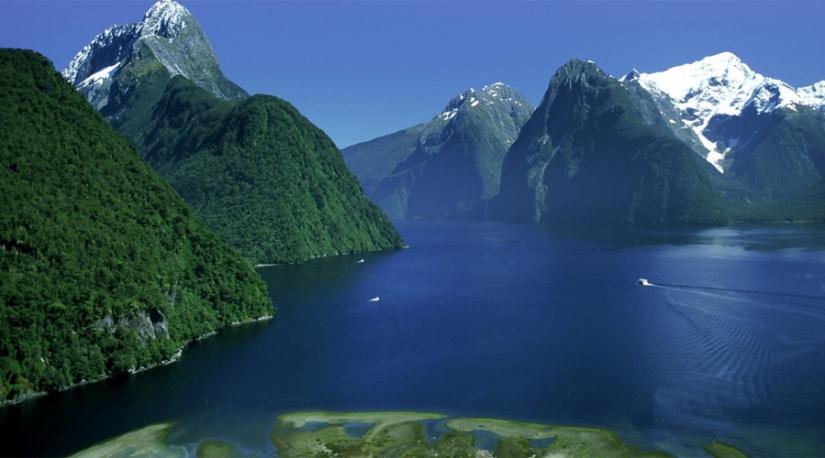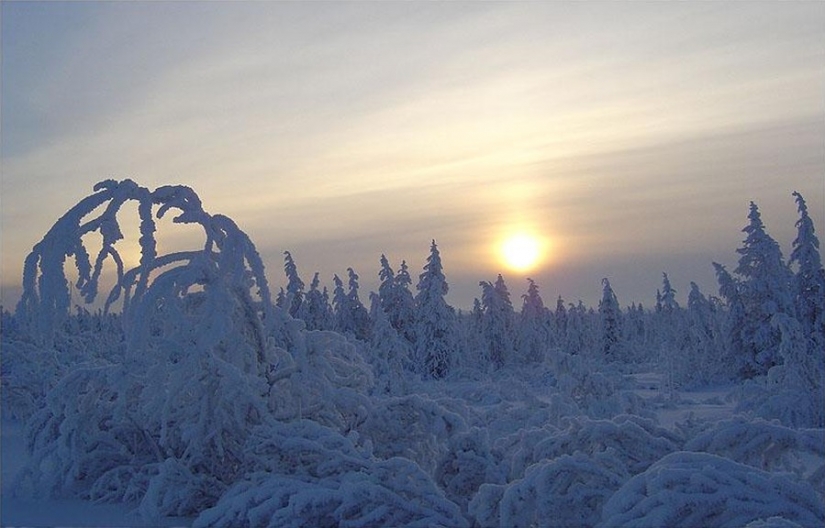The most undeveloped places on the planet
Categories: Nature
By Pictolic https://pictolic.com/article/the-most-undeveloped-places-on-the-planet.htmlIn the world there are not so many places where no foot of man. White spots on medieval maps gave way to detailed satellite images of the area, the researchers managed to climb to the highest mountain of the planet and descend even to the Mariana trench. Ordinary people can detail to consider such an outlandish area like the Galapagos Islands, just typing the query in the browser.
Nevertheless, virgin territory still exist. Year after year scientists discover new species of flora and fauna, hidden in undeveloped still the world. We have collected 15 of the most interesting places of our planet, a thorough study of which will take many years.
(Total 15 photos)
 Source: dnpmag.com
Source: dnpmag.com

1. Mountain Namuli, Mozambique
Plains of the East African plateau is one of the most unexplored and romantic places in the world. A large part of this area can explore only professional climbers. Therefore, the nature of the area remains largely pristine until now.

2. Valley Jawara, Brazil
This region, where at least 14 is not in contact with civilization the tribes of the Amazon, is one of the most isolated places in the world because so defined their lives by the government. About 2,000 indigenous people is fully Autonomous from the Brazilian government. The size of their habitats are comparable with Austria. The right of tribes to live in isolation protected by Federal Agency and special forces oversee border, protecting them from the intrusion of outsiders.

3. Northern Patagonia, Chile
Tropical forests are combined with glaciers, fjords and hot springs. Northern Patagonia is one of the most interesting landscapes in the world. Now it is the most sparsely populated region of Chile, to get here is very difficult, but it is really worth it.

4. Kamchatka, Russia
The Peninsula, located in the East of Russia, is one of the richest and unexplored in the world. There are more than three hundred volcanoes, including one that erupts continuously since 1996. Very diverse local flora and fauna. Kamchatka is home of brown bears, the number of the population — about 400 thousand people.

5. Rift New Hebrides, Pacific ocean
It is located off the East coast of Australia. Until the end of 2013, scientists did not even look in its direction — on those areas already have enough white spots. When researchers from the UK and New Zealand sent underwater robots in this crack at the bottom of the ocean have discovered an entirely new species of deep-sea creatures, yet never ever before experienced.

6. North forest, Myanmar
Many of subtropical forests, located on steep slopes of the Eastern section of the Himalayas, has remained virtually untouched by human (read: destructive) activities. Deep in the forests of the region Kachin hidden the largest population of tigers in the world. As well as here are bears, red pandas and rare species of Gibbons.

7. Tsingy de Bemaraha, Madagascar
600-square-mile national Park that is Tsingy de Bemaraha. Here it is possible to wander for months. The reserve is located on the Western edge of Madagascar. A huge number of species of plants and animals are endemic to this region. Scientists believe that there are many hidden and so far has not detected. For free visit is only the southern tip of the Park, but a large part of it for tourists is a reserved area.

8. Namibia, Republic Of Namibia
It's name literally translates as "place where there is nothing". The desert is one of the oldest (age 80 million years, in those days there lived the dinosaurs!) and the driest in the world. Nevertheless, even here there is life. In addition, in the desert, explored the rich deposits of tungsten and uranium ores.

9. Star mountains, Papua New Guinea
The main attraction of this remote area of Papua New Guinea — Hindenburg Wall. Limestone mountain rises above the kilometer and turns into a huge plateau, where high above the ground there are not been touched since the emergence of the ecosystem. Recent research here has revealed a thousand species of animals and plants, almost a hundred of which were new to science.

10. Greenland
Although the Vikings landed in Greenland in 1000-year, we are still opening a new part, located deep in the Northern region. Six new, untouched by civilization of the Islands off the coast of Greenland was discovered relatively recently, in 1999. A large part of the mainland of the country remains uninhabited. About 80 percent of the island covered by an ice cap.

11. Fiordland, New Zealand
The Fiordland national Park, the largest in New Zealand, was formed by glaciers. The vast majority of imagination, the desert is home to a unique variety of animals. Here were found the takahe, which for centuries was considered extinct flightless birds. Fiordland is one of the wildest areas of the southern hemisphere.

12. North Sentinelese island, India
Is the home of the sentinelese, who number from 50 to 400 people. They reject all contact with external people, moreover, the natives have several times attacked the research group. Therefore, the island is still almost completely unexplored.

13. Cave Shandong, Vietnam
The cave is located in Central Vietnam, Binh province. Shandong is located in the national Park Phong Nha Provides 500 kilometers South of Hanoi. Here the explorers found the rooms, reaching 200 meters high and 150 meters wide, which allowed to classify Shandong as the biggest cave in the world. In some places the cave ceiling collapsed. Through these holes in the cave light, so it grew a jungle inhabited by monkeys, birds and insects.

14. Cape Melville, Australia
Just a thousand miles from the largest Australian city of Brisbane lies a wild area of Cape Melville. The study of this area is only possible from helicopters, which, of course, complicates the work of scientists. New species are discovered here all the time — only in 2013 there are three.

15. The Republic Of Sakha, Russia
A huge area of land (about the same size, has India), located within the Arctic circle. The climate here is one of the most extreme in the world. Most of the land is covered by permafrost, but here manage to survive many kinds of animals, not to mention plants and local tribes. Apparently, a man can survive anywhere.
Recent articles

Sometimes you see a tattoo on a person and think: "Why did he do it at all?". A familiar feeling? If you have never experienced it, ...

Taxi ride like a lottery — you never know if you will pull the winning ticket. Even the official services like Uber does not ...
Related articles

In the northern part of the Afar basin in Ethiopia there is a place that scientists call a geological depression, and the locals ...

I wonder what would happen if total justice came to earth and all the natural resources, as well as all the products produced by ...

Almost every teenager has conflicts with their parents, but everyone has different ways to let off steam. While most people calm ...

Finnish photographer Juha Tanhua has shot an unusual series of "space photos". Astrophotographic images of stars, galaxies and ...